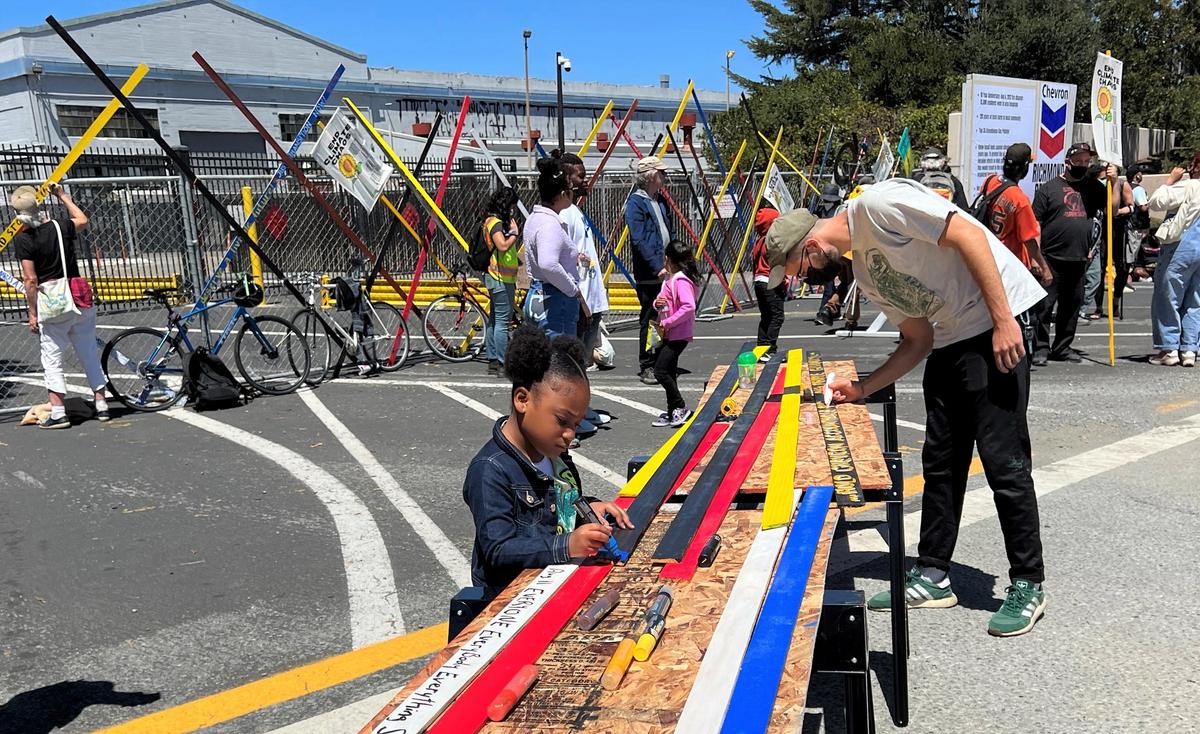Chevron, the multinational energy corporation, has drummed up controversy after prematurely removing a temporary art installation from its premises, according to the artists involved.
The artwork, titled Fencelines—A Collective Monument, was installed on 22 April, Earth Day, along a 1,000ft stretch of Richmond Parkway near Chevron’s refinery in Richmond, California. The communal art project, consisting of colorful slats affixed to what organizers believed what a mostly city-owned portion of fence, asked onlookers to write their hopes for the city and its environmental future directly onto the artwork, a nod to the inherent collectivity of social justice and the alleged dangers Chevron posed to the health of the community.
The display was intended to run until 3 June; a participant noticed the slats were missing on the morning of 16 May.
After the San Francisco Chronicle reported on the missing installation on 6 June, Chevron took responsibility for its removal in a statement to the paper.
“The installation on company property was removed, in keeping with our security, safety and facilities policies,” a Chevron representative told Artnews on 8 June. “Our fences and other company facilities are functional equipment and we cannot allow tampering or unauthorized construction”.
In a statement to The Art Newspaper, a spokesperson for Chevron said, "Chevron supports freedoms of speech and expression. Last month, Chevron removed unauthorized construction at our Richmond refinery, in keeping with our corporate health and security policies. This were routine maintenance operations, as our property and fences are functional components of our refinery operations and protect both our workforce and our communities. We are not pursuing trespass or vandalism charges at this time."
The leaders behind the Fencelines project, community organiser Princess Robinson and artist Graham LP, stated that they reached out to Chevron and the city of Richmond in advance of the installation in order to gain approval. According to the organisers, Chevron never responded, but the city approved their request. Those involved allege that Chevron never reached out to warn them about the impending removal, causing some participants to suspect theft.
Katt Ramos, managing director of Richmond Our Power Coalition, a local group fighting against oil-based industrial monopolies in the area, told Artnews, “[I thought] that was Chevron because we were three or four days away from Anti-Chevron Day and four or five days away from their stakeholder meeting, they don’t want any bad press.” Anti-Chevron Day was founded in 2012 as a response to the Richmond Refinery Fire and the resulting chemical release that negatively impacted the health of area residents in the years following.
According to Graham LP, Chevron is now contacting organisers to settle the matter. In a statement to The Art Newspaper, LP said, "We're pretty mindful of the fact that they're trying to cover this up pretty quickly, especially now that they're realizing they stole this artwork from what is definitively city owned and maintained property, and more importantly, that they tried to silence these messages from the community."
"We're trying to bring a message of unity with this project," LP added. "It was disappeared in such a strange fashion when we were very public about what were doing and went through a formal process with the city to identify a site that was city-owned, that received a unanimous approval of the public Arts Commission and all the relevant city and county agencies."
"It's been an incredible experience over the years working with a broad community that believes in clean air," he added.


